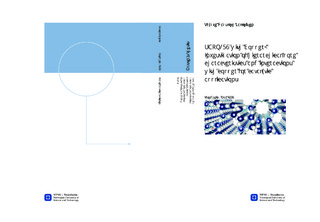SAPO-34 with Copper: Investigation of hierarchical pore characteristics and interactions with copper for catalytic applications
Abstract
Hierarchical SAPO-34 was produced using the dry gel conversion method, where an amorphous, mesoporous silicoaluminophosphate was subjected to steam treatment with the presence of organic template. This resulted in a crystalline, microporous SAPO-34 structure, with mesopores present within crystalline particles. The pore system can be classified as bimodal or multimodal, and the term hierarchical is also often used. Several techniques were employed in order to determine the presence of mesopores, including thermogravimetric analysis coupled with differential scanning calorimetry (TGA-DSC), N2-physisorption (BET) and coke deposition with subsequent microanalysis, as well as analysis by the formerly mentioned techniques. The material was found to be of moderate mesoporosity with mesopores in sizes around 6 nm. The micropore diameter inherent to the SAPO-34 structure is 0.38 nm. Copper was ion-exchanged into the conventional and hierarchical SAPO-34, and an incorporated CuSAPO-34 was also synthesized for means of comparison. The three different types of samples were tested for activity in the reaction selective catalytic reduction of NO with hydrocarbons (SCR-HC), both in dry and wet feed. The hierarchical SAPO-34 was found to be more active than conventional Cu-SAPO-34, and all samples retained good activity in wet feed as well. The hierarchical Cu-SAPO-34 was subjected to an in-situ red/ox cycling experiment with dry and wet feed during X-ray absorption spectroscopy (XAS). The results showed that the copper species alternate freely and reversibly between Cu(II) and Cu(I), with changes in gas feed (reducing/oxidizing). These properties were not affected by the presence of water vapor in the gas feed, which is a sign of good hydrothermal stability.
